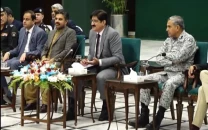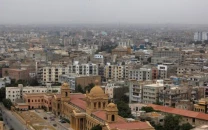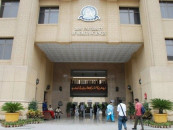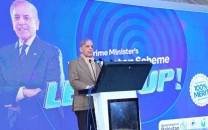State of affairs: 41% of country’s idle youth belong to Sindh: SPDC
SPDC launches report on State of Social Development in Urban Pakistan

PHOTO: AFP/FILE
These young men who neither attend school nor work constitute 54% of the population of urban areas, shared SPDC's economist Asif Iqbal, during the launch of the organisation's 13th Annual Review 2014-15, 'The State of Social Development in Urban Pakistan' at Avari Towers on Wednesday.

According to the statistics collected from the Pakistan Labour Force Survey 2014-2015 and Pakistan Education Statistics 2015, Punjab tops the list of idle young men aged 15 to 24 years with 861,000. They are followed by Sindh with 711,000 idle young men, Balochistan with 107,000 and Khyber Pakhtunkhwa with 57,000. For Sindh, this means that 64% of its urban population comprises idle young men.
As she launched the report, SPDC managing director Dr Khalida Ghaus explained that their annual reviews are theme-based. The previous study focused on social development in rural areas so this one stressed on social development in urban areas of the country. The report focuses on the urban economy, the labour market of urban Pakistan, structure of the urban labour force, access and utilisation of public services and citizens' perceptions.
Youth assembly offers platform for future leaders
Iqbal pointed out that 36% of the people living in Sindh's urban areas live below the poverty line. Sukkur tops the list of cities with the highest poverty rate with 46% living under the line while, in Karachi, 29% of the population lives below the poverty line. The report stated that 70% of the people in Sindh feel that there has either been no development or there has been a decline in development in their neighbourhoods during the last five years.
The researchers also found out that 53% of the people purchased water from private sources despite having water connections. Nearly 23% people felt that the quality of water was bad or very bad but they hardly complained. Sindh topped the list of people who chose not to go to government hospitals for treatment, as 66% of the urban population did not have faith in public-sector hospitals.
Dr Ishrat Husain, former Institute of Business Administration dean, also spoke at the launch. While the official urban population was 39%, Dr Husain believed it was actually somewhere between 45% and 50%. Travelling on the highways and motorways, one can see urban settlements, he said.
He called urbanisation a catalyst for an 'orderly political change'. The only way to progress and empowerment of communities is to devolve power and financial resources to the people at the grass-roots level.
Former information minister Javed Jabbar took exception to the manner in which Karachi was mentioned in the report as the most violent city in the world. That is not factually correct, he said, before choosing to delve into the positive aspects of the country. In a country where it is perceived that book reading is on the decline, an Urdu publisher in Lahore managed to sell 40,000 copies of Noam Chomsky in the national language, he pointed out.
Published in The Express Tribune, April 28th, 2016.



















COMMENTS
Comments are moderated and generally will be posted if they are on-topic and not abusive.
For more information, please see our Comments FAQ